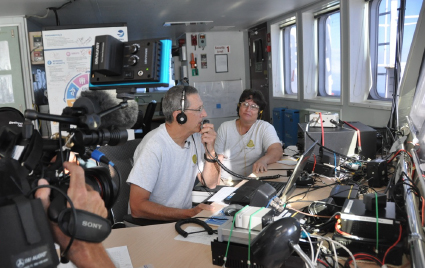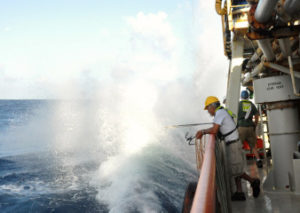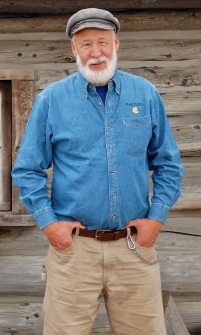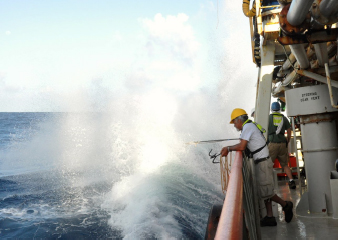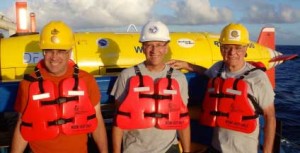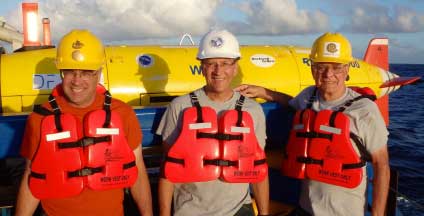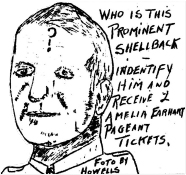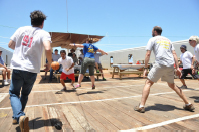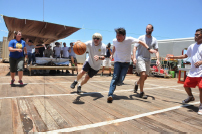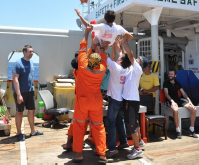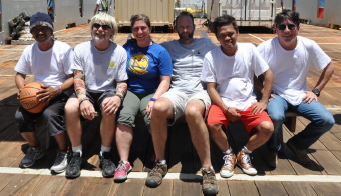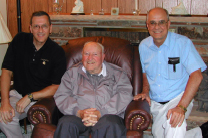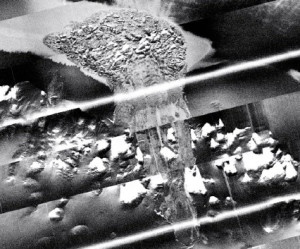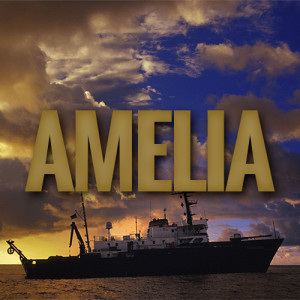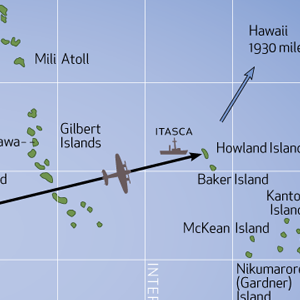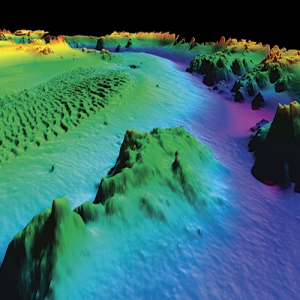Central Pacific Edition
Milestone Merriment
Halfway Day a Hit
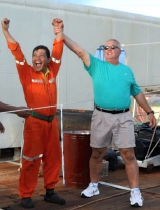 It is a sailing tradition to celebrate the halfway point of a cruise, even if you’re not sure exactly when that point will occur. The Nautical Rodeo idea was conceived by Spence and Sue when they realized that the halfway point was just one day away. The timing was perfect to incorporate the event into our regular Sunday bar-b-cue. Some games and prizes were cooked up in a hurry. Bryan was asked to host the event as MC. A sound system and music was added and a firepit was concocted using the barb- cue grill. The program included dancing under the full moon, and a nightcap of smores.
It is a sailing tradition to celebrate the halfway point of a cruise, even if you’re not sure exactly when that point will occur. The Nautical Rodeo idea was conceived by Spence and Sue when they realized that the halfway point was just one day away. The timing was perfect to incorporate the event into our regular Sunday bar-b-cue. Some games and prizes were cooked up in a hurry. Bryan was asked to host the event as MC. A sound system and music was added and a firepit was concocted using the barb- cue grill. The program included dancing under the full moon, and a nightcap of smores.
We started the festivities with dinner at 5PM (a practical move as the Equatorial sun is quite intense at noon). Folks broke out their party attire (except the REMUS OPS team who were facing an imminent AUV recovery – the survey never stops!) Dave (decked out i n Hawaiian shirt and dreads) followed with a few remarks about the tradition of Halfway Day, and recognized the excellent service from the galley team, Pieter, Mardan and Susanto.
MC Bryan took over the mike to explain what an American Rodeo is all about: “The American cowboy after a long week of wrangling cattle out on the trail would be anxious for a bit of recreation. So they got together with other cowboys and show off their wrangling skills by roping calves, riding bulls and their horsemanship. It started out as recreational activity for cowboys, and today it has become a spectator sport, in which the competition is fierce and huge prize money i s awarded. There are not too many cowboys in these parts, but we have plenty of mariners. This Nautical Rodeo is a mariner skills participation event. Everyone is welcome to try.”
 The first event was Competitive Knot Tying. Participants each had a piece of line in their hand, and upon the signal to start, judge Spence gave them a knot to tie. The quickest draw won.
The first event was Competitive Knot Tying. Participants each had a piece of line in their hand, and upon the signal to start, judge Spence gave them a knot to tie. The quickest draw won.
The second event was the Heaving Line Toss. Participants each had three tosses of the heaving line in an attempt to drop the monkey fist in the bull’s eye, a trash can. The last event was the Jellyfish Throw. Teams of two tossed a water filled latex glove to their partner on the signal from the referee. After successful throws, one team member took a step backward, and tossed the glove back to their partner.
Prizes were awarded at the end of competition: an autographed photo of Pamelia Earhart, who regretfully could not be here.
The Rodeo wrapped up to much laughter and many splattered “jellyfish.” Unfortunately, clouds interfered with views of the simultaneous sunset & moonrise, but we were confident the events occurred anyway. Next was the bonfire. Music and dancing ensued.
A brief squall sent the revelers running for cover, and serving of Indonesian Style S’mores was postponed because REMUS operations and data analysis was started. They were served in the mess for snacks. Traditional s’mores, that gooey chocolatey marshmallowy thing between graham crackers was not possible. Chef Pieter has never heard of marshmallow before. He googled it and found that he didn’t even have the ingredients to make them. So instead he improvised a chocolate and peanut butter concoction between two wafer things. It was really quite good. He dubbed it “Indonesian style.”




